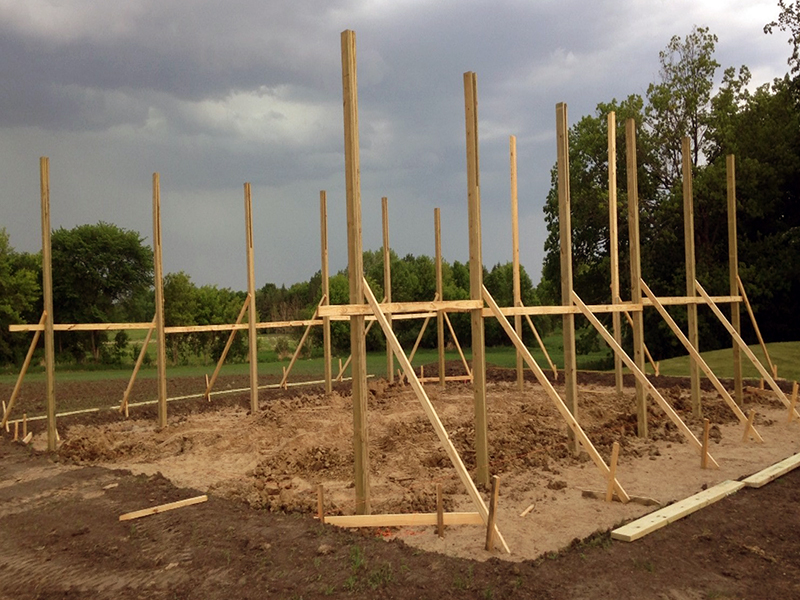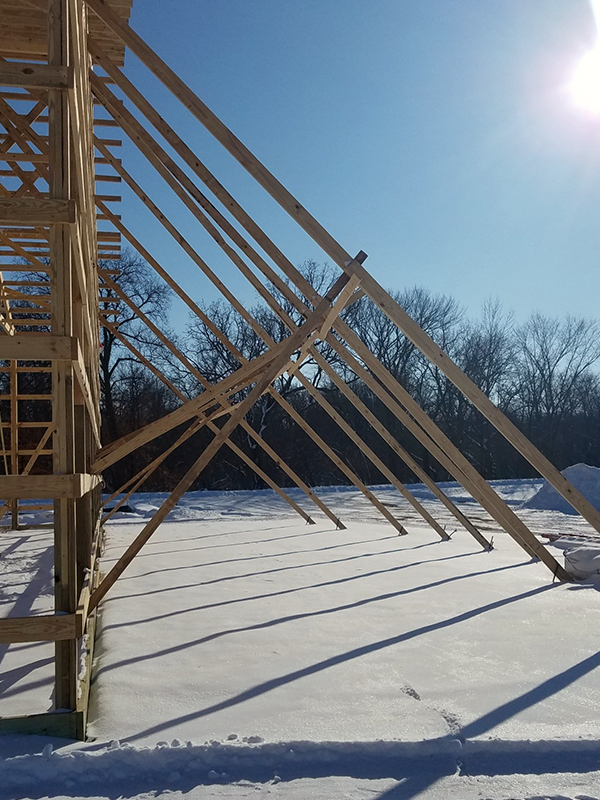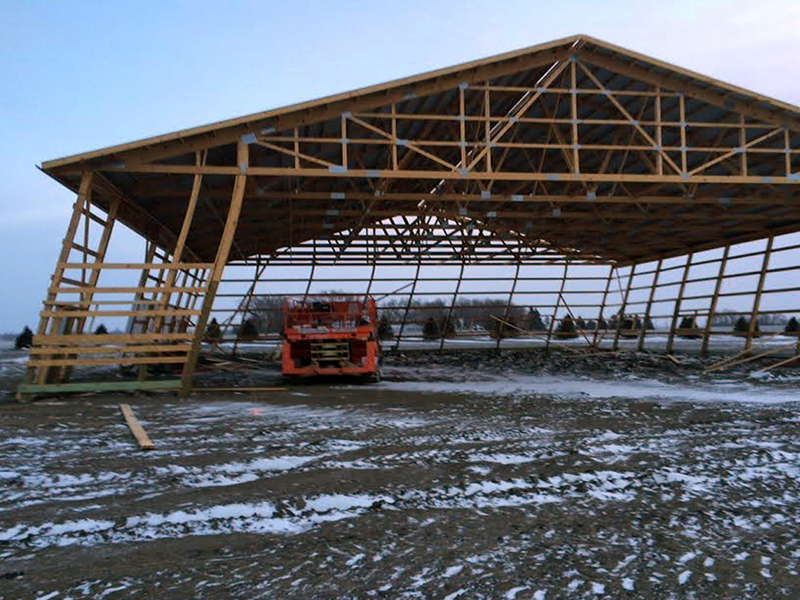Why Safety and Bracing Matter in Pole Barn Building Construction
June 12, 2025

Essential bracing in progress.
Building with Integrity Starts with Safety
In the world of post-frame building construction, it’s easy to focus on timelines and budgets. But what really determines the success of a project is how it’s built—and that begins with safety. During construction, proper implementation of safety protocols and structural bracing is critical to achieving a stable, code-compliant structure that stands the test of time. When these fundamentals are neglected, the consequences can be severe.
The Two Biggest Reasons Safety is Non-Negotiable
There are two main reasons safety is essential on a post-frame jobsite:
- Worker Protection: During construction, crew members are working at heights on an incomplete structure. This is the riskiest phase of the build, making fall protection systems and PPE (Personal Protective Equipment) vital.
- Structural Stability: Until the building is fully enclosed, it hasn’t achieved its designed wind load resistance. That means storms or even strong gusts can collapse a partially completed frame if not properly braced.
The Most Commonly Overlooked Safety Measures
In our industry, the most overlooked safety issue is fall protection. It’s also one of the most critical. Working from height is where most serious accidents occur, yet some contractors still cut corners when it comes to harnesses or tie-off systems.Beyond falls, smaller yet essential items like hard hats, safety glasses, and cut-resistant gloves are sometimes ignored. These details might seem minor, but they can prevent hand injuries, eye damage, and head trauma—all of which can sideline a worker and delay a job.
How We Make Safety Part of Every Build
At Lester, safety isn’t treated as an afterthought—it’s built into our process. Every crew member begins with structured onboarding safety training that covers everything from basic PPE use to hazard awareness. But training doesn’t stop after day one. We conduct ongoing safety trainings and regular "Toolbox Talks" that address site-specific conditions—such as working in extreme heat, on elevated platforms, or during changing weather conditions. These short, targeted sessions help crews stay alert and informed.In addition, supervisors and project managers perform routine jobsite audits to confirm that protocols are being followed. These safety checks ensure we’re not only meeting regulations but exceeding them whenever possible.
Why Temporary Bracing is Essential in Pole Barn Construction
One of the most essential steps in the pole barn construction process is temporary bracing. When a building is only partially completed, it lacks the structural integrity needed to resist wind, shifting loads, or even slight foundation movements. In pole barn buildings, much of the final strength comes from the metal roofing and siding, which aren’t added until later.
Bracing the frame: A critical step in building stability and wind resistance.
To bridge that gap, temporary bracing is used. At Lester, once the building’s columns are installed, they’re braced to both the ground and each other. When the first truss is set, it's anchored to stabilize the frame. As the construction progresses, each new truss is braced to the previous one, creating a network of support that keeps the structure true and level until the permanent materials are installed.
The Difference Between Temporary and Permanent Bracing
It’s important to understand that there are two types of bracing—and both serve critical roles. Temporary bracing supports the structure during the build phase, preventing collapse and maintaining alignment. Permanent bracing, on the other hand, becomes part of the finished building. It’s installed in the walls and roof and is designed to withstand long-term forces like wind, snow load, and internal stress. Skipping or incorrectly installing either type can lead to structural failure, code violations, or premature wear.The Consequences of Poor Safety Practices
Ignoring safety and structural best practices doesn’t just impact the build—it can damage a business’s reputation and bottom line. When workers are injured, morale drops, insurance costs rise, and projects can be delayed or halted altogether. From a legal standpoint, contractors may face fines, lawsuits, or disqualification from bidding on future work—especially government or commercial projects that require verified safety records.Even customers are taking notice. More owners and developers now require contractors to meet specific safety ratings. A history of cutting corners can disqualify a builder from high-value projects or long-term partnerships.

What happens without bracing – a costly reminder of why temporary support matters in post-frame construction.
Safe Builds Are Stronger Builds
Pole barn construction offers speed and efficiency—but only when paired with a commitment to safety and structure. At Lester, we don’t believe in shortcuts. We believe in doing the job right the first time—because that’s how we protect our crew, your building, and your investment.So whether you're planning a barn, a shop, or a commercial facility, be sure to ask your builder not just what they’ll construct, but how they’ll construct it. Safety and bracing aren’t extras—they’re essentials.
